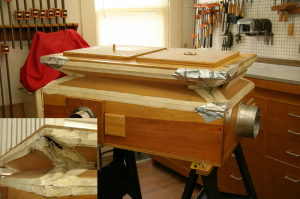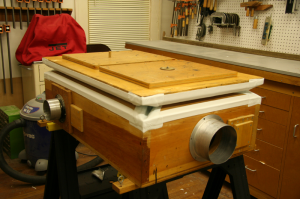What is organ Releathering?
Various types of leather are used to provide an airtight seal for moving parts in the organ. This leather varies in thickness from paper thin leather used for small action pneumatics to thick cowhide used for the large bellows that store and regulate the wind pressure in the organ.
As with all leather products, the leather used in the organ deteriorates with age and will become stiff, cracked and rotten, or simply “worn out”. The life of leather in an organ is generally 40 to 50 years but this life can be shortened by many conditions such as extreme humidity and other harsh environments. Failure of the leather results in wind leaks, dead notes and inoperative stops. Allowed to accumulate these failures eventually render the organ unusable.
Releathering generally falls into one of two categories:
- Repair Work where an individual component of an organ, such as a swell engine, has failed and is releathered/rebuilt to put it back in working order.
- Rebuild or Complete Releathering where all of the various leathers, rubberized cloth, etc. in the organ are replaced to put the organ back in “like new” condition.
At L. T. Sprinkle, Jr. & Associates we maintain an inventory of all types of organ leather, rubber cloth and the various felts and cork materials to allow us to provide our customers with prompt and professional repairs.
Only the highest quality materials are used in our work. All of our raw materials are thoroughly inspected before acceptance.
The majority of releathering work, ranging from simple repairs to complete organ releathering, is handled in-house under our direct supervision and control. Any such work entrusted to our outside associates is completed according to our specifications and is thoroughly inspected by us before being reinstalled in our customer’s organ.
Contact us regarding any of your releathering needs.



